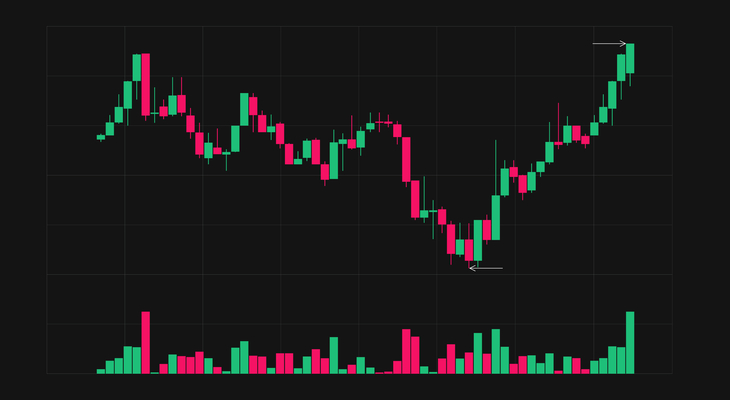Stop loss orders are a powerful risk management tool in the volatile forex market, offering traders a way to protect their capital and manage risk.
Trailing stops can help traders lock in profits and manage risk in winning trades.
Risk mitigation strategies such as widening stops can increase risk, but also the potential amount that can be lost.
Stop loss orders can be adjusted or canceled while monitoring the market, and other orders such as sell limits or stop limits can also be used.
Through understanding the extent of exposure to risk, and utilizing stop loss orders, traders can benefit from the freedom of the forex market while also protecting their capital.
Key Takeaways
- Stop Loss orders are essential in protecting capital and managing risk in the volatile forex market.
- Setting a Stop Loss allows traders to step away from trading and avoid emotional decisions.
- Traders should set Stop Loss orders based on their risk tolerance and the percentage of capital they are willing to risk on a trade.
- Stop Loss orders can be adjusted or canceled while monitoring the market, and it is important to follow pre-determined rules rather than letting emotions dictate the decision.
Risk Management Tool
Stop Loss orders are a useful risk management tool that help to protect capital by limiting losses, based on the trader’s risk tolerance. By setting a Stop Loss level, traders can step away from trading and avoid emotional decisions. This is particularly important in the volatile forex market, where small losses can quickly add up.
Risk can be managed by adjusting position sizing and understanding trading psychology. A successful trader should not risk more than 2% of their total capital on any single trade, and the distance between the opening price and the Stop Loss should be calculated accordingly.
It is possible to adjust or cancel the Stop Loss orders while the trade is open, allowing traders to lock in profits and reduce risk. Stop Loss orders can be used in conjunction with other risk mitigation strategies, such as Sell Limits or Stop Limits, to create a comprehensive risk management plan.
Trailing Stops
Navigating the ever-shifting tides of the financial markets can be a treacherous journey, and so it is essential to deploy effective tools to ensure a safe journey such as the use of Trailing Stops.
Trailing Stops are a type of Stop Loss order that follows price movements to lock in profits and maximize gains. By incorporating Trailing Stops into a comprehensive risk management strategy, traders can limit losses and protect their capital while simultaneously capitalizing on favorable market conditions.
Trailing Stops are designed to move with the market, allowing traders to stay in profitable positions without having to constantly monitor the market. Once the market has moved in the trader’s favor, the Trailing Stop will move with the market, protecting profits while allowing for additional gains.
The Trailing Stop is also adjustable, allowing for traders to adjust the position of the Trailing Stop depending on their risk tolerance and the market conditions.
Traders should keep in mind that Trailing Stops are not a substitute for proper risk management, and should be used in combination with other risk management strategies. By employing Trailing Stops, traders can maximize profits while limiting risk.
With the use of Trailing Stops, traders can make more informed decisions and successfully navigate the unpredictable forex market.
Risk Mitigation Strategies
Risk mitigation strategies are essential to success in the financial markets, and must be used in conjunction with other tools to ensure trader safety.
Strategies include:nn1. Avoiding emotional decision making
- Setting risk tolerance levels
- Utilizing Stop Loss orders
The use of Stop Loss orders is a key strategy in risk management. These orders are set at a predetermined price to limit losses and are based on the individual’s risk tolerance. Stop Loss orders help traders avoid emotional decisions and protect their capital by closing the trade when the limit is reached.
It is important to calculate the distance between the entry price and the Stop Loss based on the maximum amount the trader is willing to risk. Other orders, such as Sell Limits and Stop Limits, can also be used in conjunction with Stop Loss orders.
Traders should remember to use all available risk mitigation strategies to protect their capital and manage their risk. Emotions should not be the reason for moving a Stop Loss, and any adjustments should be pre-determined. By using Stop Loss orders, traders can step away from the market and avoid large losses, as well as lock in profits by trailing the stop.
Risk management is essential for success in the forex market, and traders should seek independent financial advice if the risks involved are unclear.
Frequently Asked Questions
How often should I adjust my Stop Loss orders?
The frequency of adjusting Stop Loss orders depends on the trader’s risk tolerance and strategic planning. Portfolio diversification is key to managing risk, and traders should consider adjusting their Stop Loss orders to reflect changes in the market.
A trader should consider the amount of money they are willing to lose on a single trade, and set their Stop Loss accordingly. It is important to also factor in potential market volatility and adjust the Stop Loss if necessary.
Generally, traders should review and adjust their Stop Loss orders at least once a month to ensure that their risk is managed appropriately. Ultimately, the frequency of adjustments to Stop Loss orders should reflect the trader’s risk appetite and strategic portfolio goals.
What is the maximum amount of capital I should risk in a single trade?
It is important to understand the extent of your exposure to risk when trading in leveraged products such as forex and CFDs. Most traders aim to make a loss of no more than 2% of their total capital on any single trade. This is an important rule of thumb when determining your risk tolerance and the maximum amount of capital you should risk in a single trade.
It is also important to consider the leverage risk associated with the trade and adjust the percentage of capital accordingly. By doing so, you can protect your capital and manage risk effectively.
How do I determine the distance between the opening price and the Stop Loss?
The distance between the opening price and the Stop Loss should be calculated based on the trader’s risk tolerance and the percentage of capital they are willing to risk on a trade.
A good rule of thumb is to never risk more than 2% of the total capital on any single trade.
Trailing stops can also be used to lock in profits and manage risk in winning trades, as the stop should be moved to lock in profits when the market moves in the trader’s favor.
Risk reward should also be taken into consideration when determining the Stop Loss distance, as the potential gains should outweigh the potential losses.
What is the difference between a Stop Loss and a Take Profit order?
Stop Loss and Take Profit orders are two of the most important tools in the forex trading toolbox. While both are used to manage risk and protect capital, there are important distinctions between the two.
Stop Loss is used to close a losing position while Take Profit is used to close a profitable position. Stop Loss orders are typically placed below the entry price for long positions or above the entry price for short positions, while Take Profit orders are placed according to trend analysis and using leverage.
Both orders require traders to manage their emotions to ensure the best possible outcome. By using Stop Loss and Take Profit orders, traders can lock in profits while limiting losses, and ultimately protect their capital in the forex market.
What are some other risk management strategies to consider?
Risk management strategies should go beyond Stop Loss and Take Profit orders.
Hedging strategies involve taking two opposing positions to protect against an adverse market move.
Trailing stops can also be used to lock in profits while allowing the trade to continue if the market continues to move in favor of the trader.
Other strategies such as diversifying investments, setting a maximum loss or profit target, and using proper leverage can all help to mitigate risk.
It is important to understand the risks involved and develop a strategy that works best for each individual’s risk tolerance.
Conclusion
The use of Stop Loss orders in forex trading is an effective way of protecting capital and managing risk. When employed correctly, traders can limit their exposure to unfavorable market movements and maximize potential profits.
In addition, the use of trailing stops can ensure that profits are locked in and risk is minimized. Careful consideration should be given to the placement of Stop Loss and other orders, as well as the level of leverage used.
Ultimately, Stop Loss orders can be a valuable tool for managing risk and protecting capital in the forex market.












